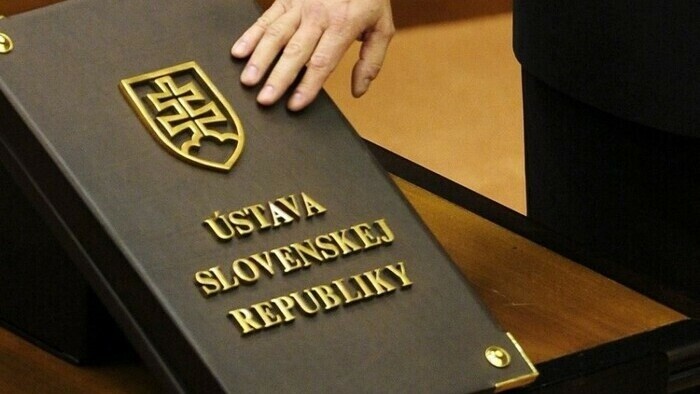Constitution Day is a public holiday in Slovakia and is celebrated and is celebrated every year on 1 September. In Slovak it is called Deň ústavy Slovenskej republiky and it commemorates the adoption of the Slovak constitution on 1 September 1992. Our colleague Romana Grajcarová has prepared a brief summary of the events that led to the adoption of the first document.
Constitution day Máte problém s prehrávaním? Nahláste nám chybu v prehrávači.
Although the current Constitution of Slovakia is a relatively new document, its articles are based on values that had been advocated already 100 years ago in the Czechoslovak Constitution of 1920. But 100 years is a long period during which anything can change completely.
Even though the independence of Czechoslovakia was proclaimed in 1918, the adoption of the first Czechoslovak Constitution only took place 2 years later, on 29 February 1920. The constitution, modelled on the constitutions of established democracies, was conceived in the light of jurist and philosopher Hans Kelsen's contribution to constitutional law. The system of government the constitution introduced made Czechoslovakia the most westernized of all of the central and eastern European nations on the verge of World War II.
However, the prosperous, liberal and democratic period of the First Czechoslovak Republic was soon to end. Following the Anschluss of Nazi Germany and Austria in March 1938, the Nazi leader Adolf Hitler's next target for annexation was Czechoslovakia. In 1939, the First Czechoslovak Republic was divided. One part of the territory, mostly inhabited by ethnic Czechs, became the Protectorate of Bohemia and Moravia, the other part inhabited mostly by ethnic Slovaks became the First Slovak Republic – a client state of Nazi Germany. It also adopted its own constitution in 1939, built on totalitarian principles.
Nevertheless, as World War II continued, states started to progressively withdraw from the Munich Agreement. Therefore, all the legal acts adopted in compliance with the agreement ceased to be applicable, including the Nazi constitution of the First Slovak Republic. Victory was here! The war has ended. Unfortunately, that, however, didn’t mean better tomorrows for Czechoslovakia.
The year 1948 brought a new constitution - the second constitution of Czechoslovakia. It came into force on 9 May, shortly after the communist seizure of power in the country on 25 February 1948 and it replaced the 1920 constitution.
It was not a fully communist constitution. It was superficially similar to its predecessor; indeed, several provisions were directly carried over from the earlier document. However, it contained a number of elements borrowed from the "Stalin Constitution" of the Soviet Union. The final document was close enough to the Soviet model that President Edvard Beneš refused to sign it and resigned. It was flagrantly violated by the Communist Party of Czechoslovakia (KSČ), the government and many individuals throughout the period of its being in force, especially regarding the provisions on private ownership and human rights.
As the years passed, the communist government started to realise they need even stricter and more regime-oriented constitution. Therefore, in 1960 the third constitution of Czechoslovakia was adopted. It replaced the 1948 Constitution that contained a mixture of liberal democratic and communist elements and introduced fully communist approach. It borrowed heavily from the 1936 Soviet Constitution which was reflected in the change of the country's official name from the Czechoslovak Republic to Czechoslovak Socialist Republic.
After the Velvet Revolution, the third constitution of Czechoslovakia was extensively revised to prune out its communist character, with a view toward replacing it with a completely new constitution. However, this never took place, and it remained in force until the dissolution of Czechoslovakia in 1992.
And that brings us to the current constitution whose passing on 1 September 1992 is being celebrated today in Slovakia and whose many formulations have been taken directly from the Czechoslovak Constitution of 1920. Well, the course of history has many turnings and sometimes 100 years is needed for it to come back on track.

